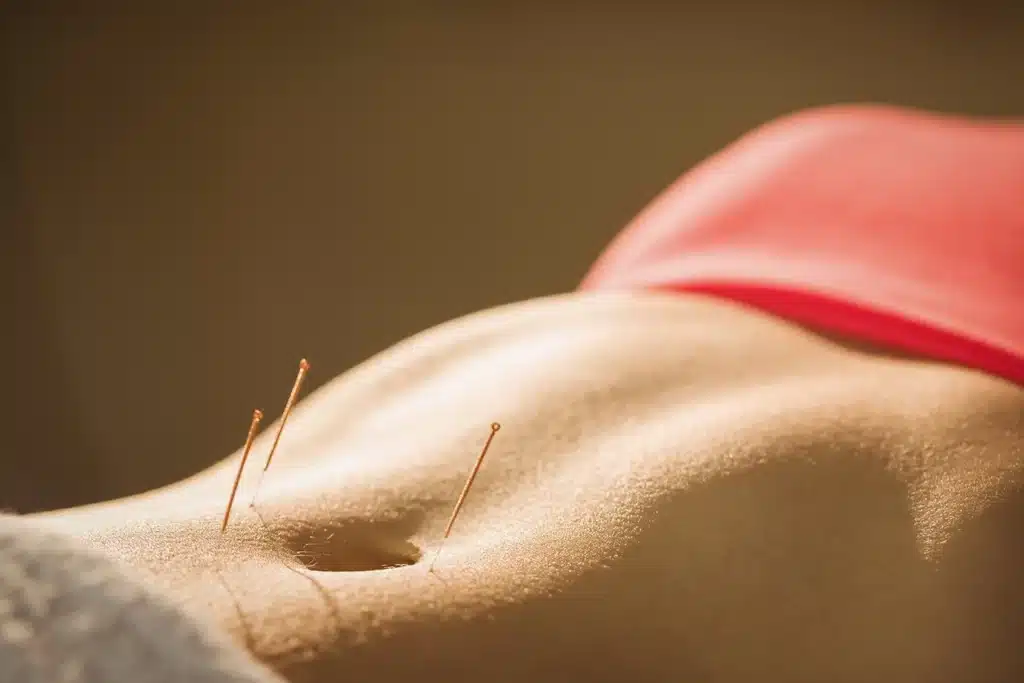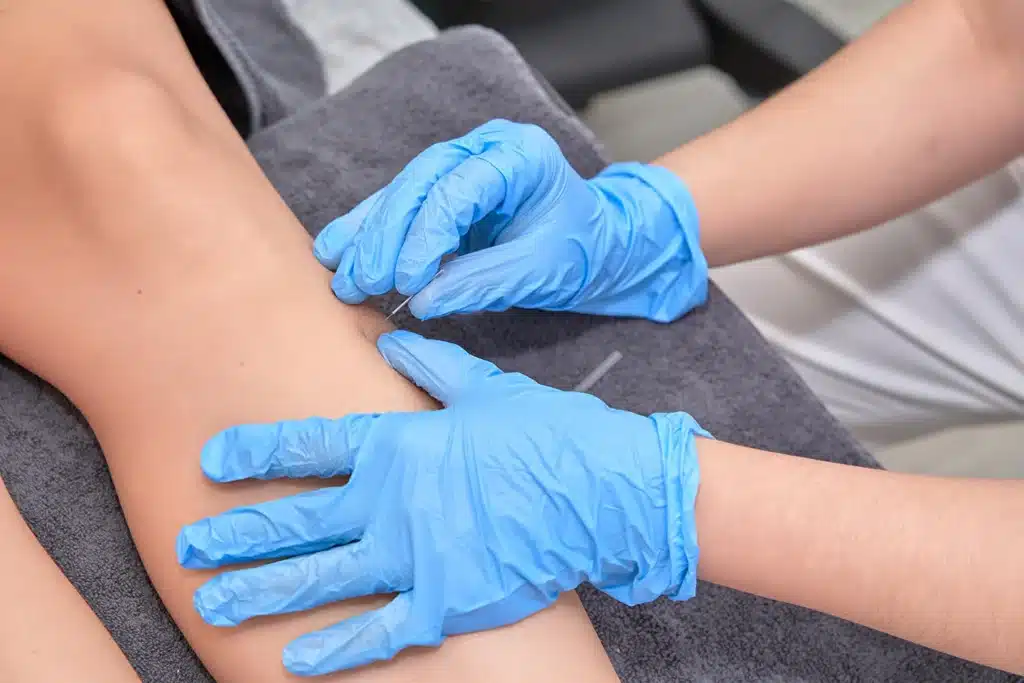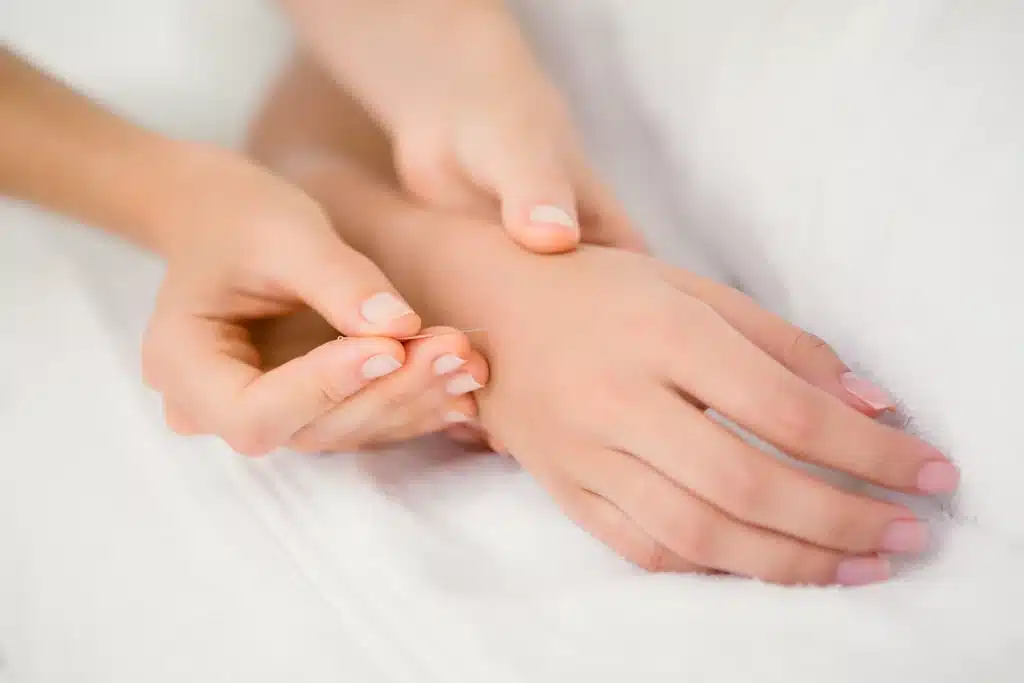
Table of Contents
ToggleWith a reputation for relieving everything from chronic pain to migraines, it’s no surprise that interest in acupuncture uses is growing.
Acupuncture, a practice as ancient as time itself, still finds its place in modern medicine.
Over 2,500 years ago, acupuncture was brought to the world by traditional Chinese medicine. Today, this practice has integrated seamlessly into modern healthcare, with a prominent role in fields like orthopedics.
According to scientific studies, acupuncture has been found to stimulate nerves, muscles, and connective tissues. This leads to a boost in the body’s inherent painkilling abilities and improves blood circulation.
These advantages make it an ideal addition to various contemporary medical treatments. However, just like any other medical practice, acupuncture also carries potential risks.
Hence, the importance of having professionally trained and certified practitioners cannot be overstated to ensure the safety and efficacy of each acupuncture session.
Acupuncture is a pivotal component of Traditional Chinese Medicine (TCM), a comprehensive healthcare system with a profound history that dates back more than 2500 years.
This therapeutic method utilizes the insertion of slender needles into designated areas of the body, known as acupuncture points.
The purpose of this technique is twofold: firstly, to facilitate healing processes and, secondly, to harmonize the body’s vital energy. This energy is referred to as ‘Qi’ in TCM and is considered the driving force behind every physiological function in the human body.
According to TCM principles, disease or discomfort arises when this Qi is blocked or unbalanced. Therefore, the objective of acupuncture is to rectify the flow of Qi, aiming to restore health and well-being.
In practice, an acupuncturist inserts the needles to specific depths at these acupuncture points, depending on the nature of the ailment. The needles are usually left in place for a period ranging from a few minutes to half an hour.
This procedure, in turn, stimulates the body’s healing response, promotes relaxation, and enhances overall wellness. Despite the use of needles, acupuncture is generally considered a virtually painless and soothing experience.
In the context of modern medicine, acupuncture is recognized as a complementary therapeutic approach, with numerous studies affirming its effectiveness in treating a variety of health conditions, including chronic pain, stress, and digestive disorders, among others.
Acupuncture operates on the foundational principle of Qi, often translated as the ‘vital life force’ or ‘energy’ that circulates throughout the body. Qi is integral to every function, from our heartbeat to our thought processes, according to Traditional Chinese Medicine (TCM).
In the framework of acupuncture, thin needles are inserted at meticulously identified points on the body, referred to as acupuncture points.
This procedure is conducted with the objective of releasing any blockages or creating a balance in the flow of Qi. It’s believed that when Qi flows freely and harmoniously throughout the body, optimal health and wellness are achieved.
Additionally, acupuncture takes into account the principle of Yin and Yang – two opposing yet complementary forces that exist in nature and within our bodies.
Yin represents elements such as cold, rest, and passivity, while Yang signifies heat, activity, and excitement. These forces continuously interact with each other, maintaining a delicate balance that is crucial to our health.
When these forces are out of balance, it’s thought to disrupt the flow of Qi, leading to illness or discomfort. By stimulating specific acupuncture points, acupuncturists aim to restore the equilibrium of Yin and Yang within the body, further enhancing the free flow of Qi.
In this way, acupuncture offers a holistic approach to health and wellness, seeking to align physical health with mental and emotional well-being.

Despite its ancient origins, acupuncture finds a place in modern medicine due to a growing body of scientific evidence supporting its effectiveness.
Researchers suggest that acupuncture works by influencing the nervous system, triggering biochemical changes that aid in pain reduction and improved body function.
Acupuncture’s effectiveness extends far beyond what one might initially expect, offering relief for a diverse range of health conditions.
This ancient practice is most widely recognized for its remarkable success in managing various forms of pain.
Let’s delve deeper into its applications:
Stress and Anxiety Management:
The modern world brings with it high levels of stress and anxiety. Acupuncture uses points that are known to relax the body and mind, helping to restore a sense of calm and balance.
It’s believed to aid in the regulation of neurotransmitters and hormones, such as serotonin and cortisol, which play a crucial role in mood regulation and stress response.
Insomnia Treatment: Acupuncture is often used to treat insomnia and other sleep disorders. By targeting points that help to calm the mind and balance the body’s natural rhythms, it can improve the quality and duration of sleep.
Digestive Disorders: From chronic conditions like Irritable Bowel Syndrome (IBS) and gastritis to general stomach discomfort, acupuncture can help regulate gastrointestinal functions and alleviate symptoms. It can help stimulate the body’s digestive system, soothe inflammation, and manage pain.
In acupuncture, each health ailment corresponds to specific points on the body. Stimulating these points helps the body’s self-healing process, offering relief from symptoms and restoring balance.
While each individual’s experience with acupuncture may vary, the extensive uses of acupuncture make it a valuable tool in holistic health management.well

Initial consultations involve a comprehensive discussion about your health history and current symptoms.
The practitioner then inserts thin, sterile needles at specific points, which might produce a sensation often described as a ‘tingling’ or ‘warm’ feeling.
A typical session lasts for about 30-60 minutes, and the treatment plan may involve several sessions, depending on the individual’s condition.
Acupuncture is a low-risk treatment option with potential benefits that include pain relief, stress management, improved sleep, and enhanced overall wellbeing.
Common fears, like the pain associated with needles, are often unfounded as acupuncture uses extremely thin needles, and the procedure is generally painless.
However, it’s essential to consult a certified practitioner to avoid any potential risks.
Let’s take a moment to dispel some common myths and misconceptions about acupuncture to offer a clearer understanding:
The needles utilized in acupuncture are extremely thin – much finer than the ones used for injections or drawing blood. Acupuncture practitioners are trained to insert these needles gently and precisely, often making the process virtually painless.
Some individuals report a tingling or warm sensation at the needle insertion points, but it’s usually not described as discomfort or pain.
These factors include the nature and severity of the individual’s condition, their overall health, and how their body responds to the acupuncture treatment.
For some, relief may come after just a few sessions, while others might need a longer course of treatment for optimal benefits.
Your acupuncturist will be able to provide a more tailored treatment plan after an initial consultation and assessment.
Choosing the right acupuncturist is a crucial step in your wellness journey. It’s important to consider several factors to ensure you receive the best possible care:
Qualifications and Credentials: The practitioner you choose should hold the proper licensure and qualifications to practice acupuncture.
This usually includes a degree or diploma from a reputable acupuncture or Traditional Chinese Medicine (TCM) institution, and a valid license to practice in your specific geographic location.
Certifications from recognized acupuncture associations can further attest to their professional standing and commitment to maintaining current knowledge in the field.
Experience and Specialization: Consider the practitioner’s experience, especially in treating conditions similar to yours. Acupuncture has various subspecialties, and some practitioners may have additional training or experience in specific areas, such as pain management, mental health, or women’s health.
Communication and Comfort: Establishing a comfortable rapport with your acupuncturist is essential. They should be someone with whom you feel at ease discussing your health concerns.
The practitioner should demonstrate good listening skills, provide clear explanations about the treatment, and show a genuine interest in your health and well-being.
Remember, the goal is to find a skilled acupuncturist who aligns with your health goals and provides a comfortable and positive treatment experience.
In the expansive landscape of healthcare, acupuncture stands out with its holistic approach, treating individuals rather than isolated symptoms.
By focusing on the root cause of health issues – the underlying imbalances in the body’s energy – acupuncture goes beyond temporary relief, aiming for lasting wellness.
This richly diverse and time-tested therapy has endured the test of time and now seamlessly integrates with modern healthcare, offering a complementary and sometimes alternative solution to conventional treatments. Its wide array of uses, from managing chronic pain to improving mental health, attests to its versatility and efficacy.
While acupuncture holds great promise, it’s critical to remember that each individual’s health journey is unique. What works best for one person may not work as well for another.
Therefore, it’s always advisable to consult with healthcare professionals before starting any new treatment. This ensures a well-rounded, personalized, and safe approach to health and well-being.
As we continue to explore and understand the myriad benefits and uses of acupuncture, one thing remains clear – this ancient practice has a significant role to play in contemporary healthcare, guiding us towards a balanced, healthier future.
GET IN TOUCH +
285 Sills Road
Building 5-6, Suite E
East Patchogue, NY 11772
(631) 475-5511
184 N. Belle Mead Road
East Setauket, NY 11733
(631) 675-6226
GET IN TOUCH +
285 Sills Road
Building 5-6, Suite E
East Patchogue, NY 11772
(631) 475-5511
184 N. Belle Mead Road
East Setauket, NY 11733
(631) 675-6226
SUBSCRIBE TO OUR NEWSLETTER +
Send us a Google review. Click this link and let us know how we did!
Review us on Yelp too.